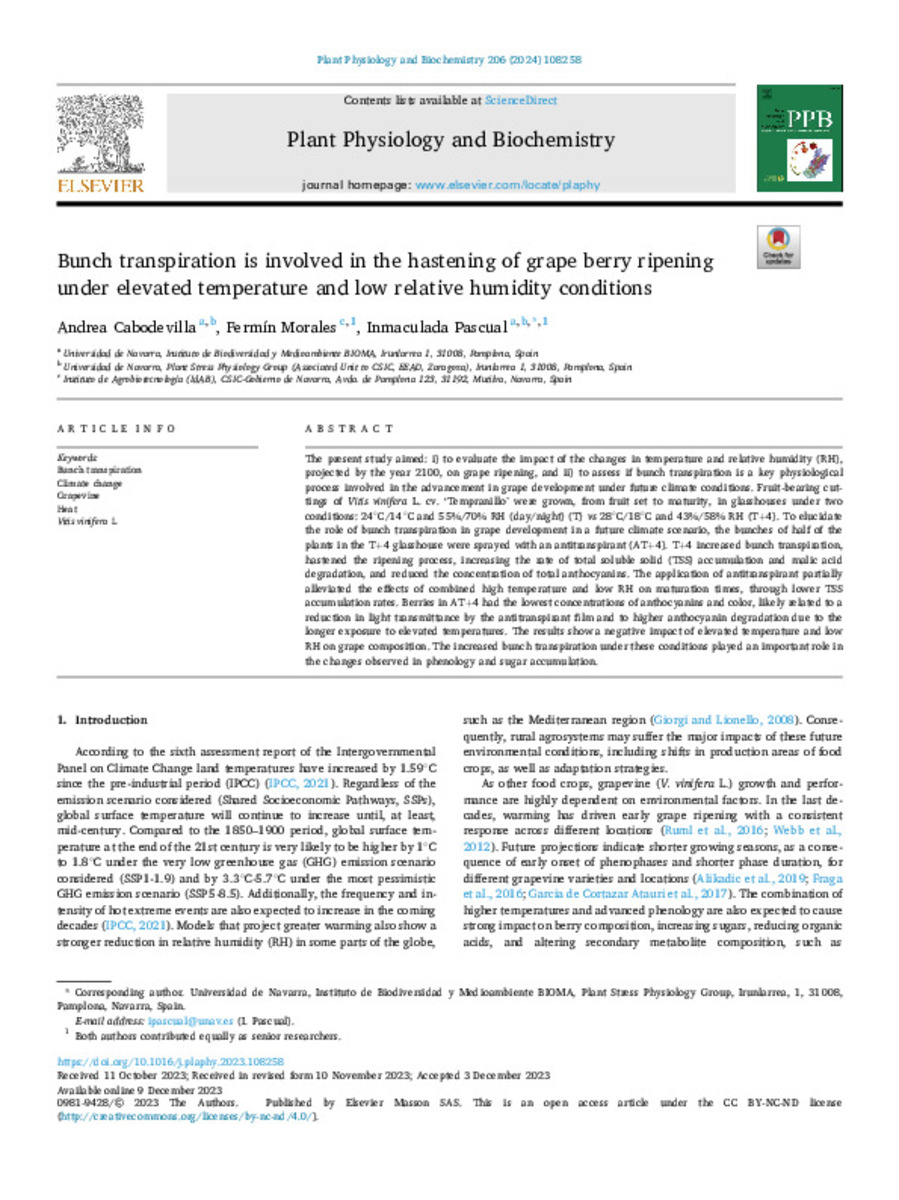Bunch transpiration is involved in the hastening of grape berry ripening under elevated temperature and low relative humidity conditions
Keywords:
Bunch transpiration
Climate change
Grapevine
Heat
Vitis vinifera L
Note:
This is an open access article under the CC BY-NC-ND license
Citation:
Cabodevilla, A. (Andrea); Morales, F. (Fermin); Pascual, I. (Inmaculada). "Bunch transpiration is involved in the hastening of grape berry ripening under elevated temperature and low relative humidity conditions". Plant Physiology and Biochemistry. 206 (108258), 2024, 108258
Statistics and impact
0 citas en

0 citas en

Items in Dadun are protected by copyright, with all rights reserved, unless otherwise indicated.











